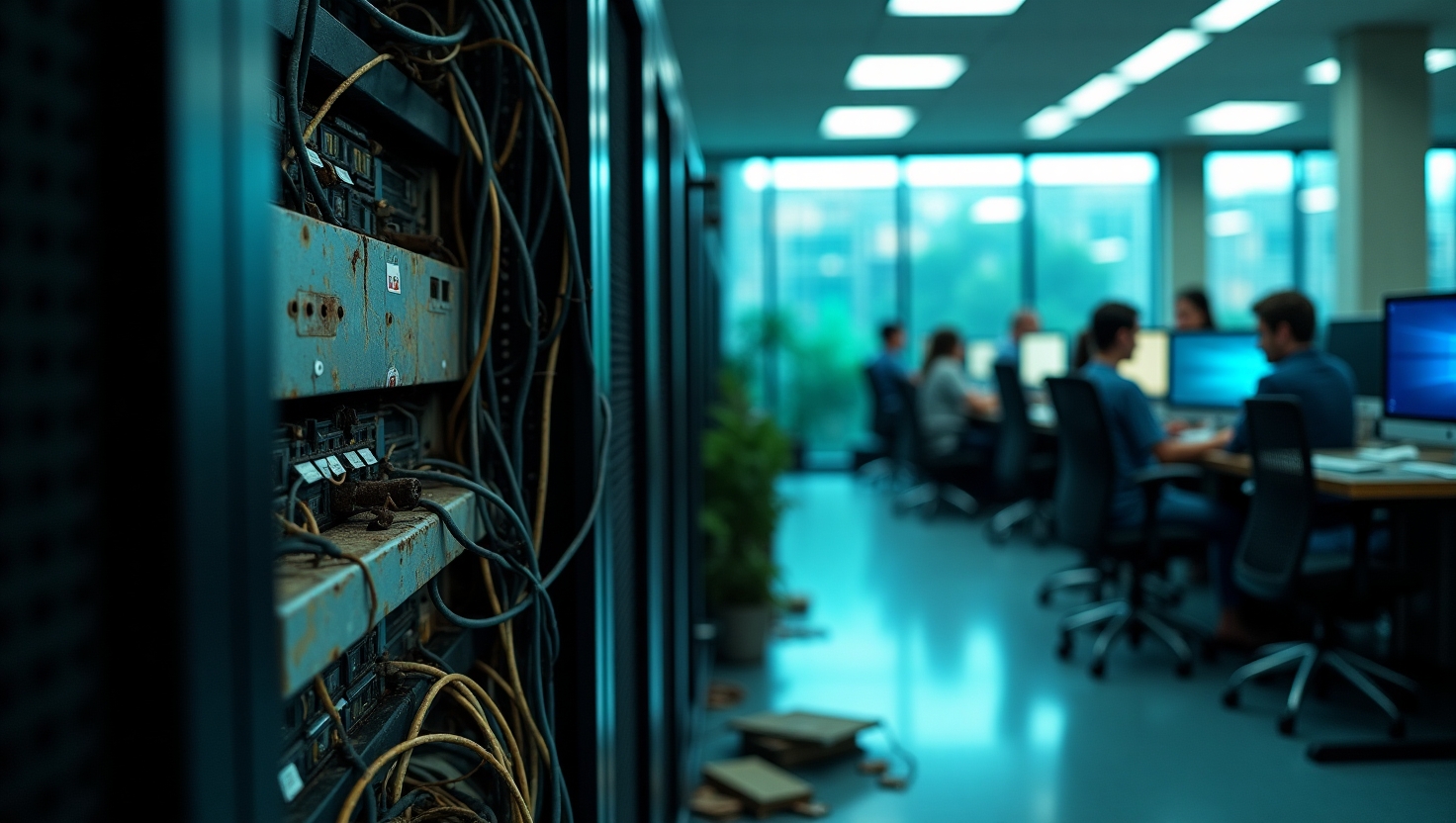The Hidden Costs of Outdated IT Assets: When to Upgrade vs. When to Replace
The Hidden Costs of Outdated IT Assets: When to Upgrade vs. When to Replace
In today's tech-driven business environment, the management of IT assets represents a significant challenge for organizations of all sizes. While the upfront costs of new technology are obvious, the hidden expenses associated with maintaining outdated systems often go unnoticed until they become problematic. This blog explores the true cost of aging IT infrastructure and provides a framework for deciding when to upgrade existing assets versus replacing them entirely.
The True Cost of Outdated IT Assets
Decreased Productivity
Outdated technology frequently leads to slower processing speeds, system crashes, and compatibility issues. When employees spend time waiting for applications to load or rebooting frozen computers, productivity suffers. Research suggests that employees lose an average of 38 hours annually due to slow or outdated technology.
Increased Security Vulnerabilities
As hardware and software age, manufacturers eventually cease providing security updates and patches. These unpatched systems become prime targets for cyberattacks, potentially leading to data breaches, ransomware attacks, and regulatory compliance violations. The average cost of a data breach now exceeds $4.5 million, making this a significant financial risk.
Rising Maintenance Costs
As IT assets age, they require more frequent repairs and maintenance. Finding replacement parts for older equipment becomes increasingly difficult and expensive. Additionally, IT staff must dedicate more time to troubleshooting problems with legacy systems rather than focusing on strategic initiatives.
Compatibility Issues
Newer software often requires updated hardware specifications to run efficiently. Organizations stuck with outdated equipment may find themselves unable to implement the latest productivity tools or industry-specific applications, putting them at a competitive disadvantage.
Energy Inefficiency
Older computers, servers, and networking equipment typically consume more electricity than their modern counterparts. This not only increases utility costs but also contradicts sustainability goals that many organizations now prioritize.
When to Upgrade Existing Assets
1. When Core Hardware Is Still Viable
If the fundamental components of your hardware (like processors and motherboards) remain adequate for your needs, upgrading specific elements such as RAM or storage can be cost-effective. For example, adding more memory to a relatively recent workstation can significantly improve performance at a fraction of replacement cost.
2. When Software Updates Are Available
If your existing hardware can support current operating systems and security updates, keeping these assets while upgrading the software may be sufficient. This approach works particularly well for devices that aren't used for resource-intensive tasks.
3. When Budget Constraints Are Tight
During periods of financial constraint, strategic upgrades can extend the useful life of IT assets until a full replacement becomes financially feasible. This approach requires careful assessment of which upgrades will provide the most significant performance improvements.
4. When Environmental Impact Is a Concern
Upgrading extends the life of existing equipment, reducing electronic waste. For organizations with strong environmental commitments, this can align with broader sustainability goals.
When to Replace Completely
1. When Total Cost of Ownership Exceeds Replacement Cost
Calculate the total annual cost of maintaining older systems, including repairs, downtime, productivity losses, and energy consumption. When this figure approaches or exceeds the amortized cost of new equipment, replacement becomes financially justifiable.
2. When Security Risks Become Unmanageable
If your hardware or software has reached end-of-life status with no further security updates available, replacement may be necessary to maintain adequate cybersecurity protection and compliance with regulations.
3. When Business Requirements Have Changed Significantly
As organizational needs evolve, technology must keep pace. If your current IT infrastructure cannot support new business processes, customer expectations, or growth plans, replacement rather than incremental upgrades may be necessary.
4. When New Technology Offers Transformative Benefits
Sometimes, new IT solutions offer capabilities that fundamentally change how business is conducted. Cloud computing, AI-enabled systems, and advanced analytics platforms may deliver such significant advantages that complete replacement becomes strategically essential.
Developing a Strategic Approach
Rather than making reactive decisions when technology fails, organizations benefit from developing a proactive IT asset management strategy:
-
Inventory and Assessment: Maintain a comprehensive inventory of all IT assets, including age, specifications, maintenance history, and performance metrics.
-
Lifecycle Planning: Establish expected lifecycles for different categories of equipment and budget accordingly for regular refreshes.
-
Total Cost Analysis: Look beyond purchase prices to consider all costs associated with IT assets throughout their lifecycle.
-
Prioritized Replacement: Identify critical systems where failure would have the greatest business impact and prioritize these for replacement.
-
Hybrid Strategies: Consider different approaches for different asset categories—perhaps leasing frequently updated equipment while purchasing longer-lasting infrastructure.
Conclusion
The decision to upgrade or replace IT assets shouldn't be based solely on upfront costs or arbitrary timeframes. By understanding the hidden costs of outdated technology and taking a strategic approach to IT asset management, organizations can make informed decisions that balance immediate budget concerns with long-term business objectives. The right choice will ultimately depend on your specific business requirements, financial situation, and strategic goals—but ignoring the issue entirely is invariably the most expensive option of all.
